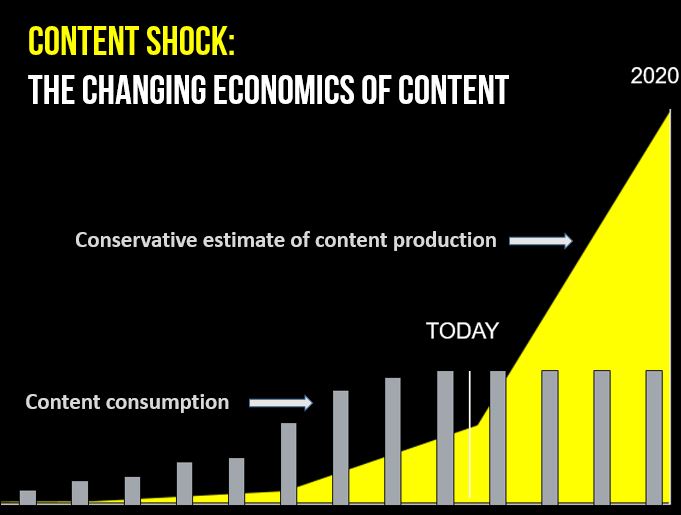Content Outline
Digital Marketing Mistakes to Avoid in 2019

There are always things to learn in any industry, and of all the industries, digital marketing is easily one of the fastest-paced. Innovation occurs in our industry on a near-daily basis, and though there are many practitioners, few can truly keep up. Fewer still actively learn from others' mistakes.
Read on for the common mistakes made by digital marketers, and recent prominent examples.
1) Poorly defined goals and objectives
Every campaign has to come with clearly defined milestones and goals. If there aren’t any, it isn't a marketing campaign. It's a nightmare waiting to happen.
The less enlightened marketers or business leaders typically provide very nebulous goals. Like: “The audience are people, all from Townsville, male and female, ages 18 to 40.”
(Of course, marketers representing international mass-market brands would need to reach everyone. But they would have broken the market into segments, and clear priorities.)
In the digital sphere today, there is a need for better defined goals and objectives like:
-
To launch our new product, we need 1000 LIKES and followers with 500 engagements by X date. We also want these followers to be mostly Gen-X.
-
Our competitor is gaining a lot of attention due to their Y campaign. We want to steal that.
-
We need millennials to feel that our product Z is vital for their social media presence.
Without clearly defined goals, the messaging and creatives may not be well-aligned, while the media spend may not be as effective. Which is a budget squandered, and lethal for the brand, especially when combined with the next 2 problems.
2) Content Overload - The "More is More" way is now broken
2018 was known to be the year of digital content overload. Due to the near-zero barrier to entry for content creation, the amount of content created has grown exponentially. (In case you've missed the memo, see Buzzsumo's Content Trends 2018 report. It's part of our annual readings.)
Yet many brands fail to comprehend the hard limits to a person's ability to consume content and show no sign of stopping. This graph by Mark Schaefer explains it best:

3) Content Fatigue - The "same old, same old" has grown mold
Audiences get the same message from similar brands all the time. Repeating the same message, of their skin becoming “more smooth and supple” after using a certain soap, simply wears everyone out. (Is anyone expecting soaps to do the opposite?)
Find another way of saying that, and do go beyond paraphrasing words with a thesaurus. Add a touch of humour, if possible. If we stay with soap brands, here are some ideas:
-
Shower room skating rinks - ice hockey team continues playing in the shower, by using the soap bar as a puck.
-
Naked town - new soap in town, people's skin are now so smooth, the clothes can't stay on
-
Time traveller - Sign on Keanu Reeves and run as far as you can with this meme. The soap keeps him looking immortal.
Yes, it's an Asian thing to want to play safe and fit in. Yes, Shopee's recent Christian Ronaldo ad is considered terrible by many. But we applaud its courage, and want to point out that the video ad did a great job winning Shopee some attention. The ad is so bad it's good, and has 875k views on Shopee SG's channel alone. Which means something like 20% of Singapore has seen it. #itssomething
4) Not using data to inform strategy
Everyone has some form of data. Facebook page insights, customer feedback... Granted, processing the information into neat graphs and actionable insights can be a tedious process. But ignoring the data does more than lengthen the trial and error phase; it can lead to a poor customer experience. Customer experience starts from the very first hello; a tone-deaf ad is sometimes all it takes to leave a negative impression. (Ok, we did say we'll provide fresh examples, but this ad by STB is simply too "good" to be forgotten. Do read the comments.)
When data is properly harnessed, it becomes inspiration and direction for the creatives instead. Watch this amazing ad by Income, and read the analysis by Marketing Interactive.
5) Not thinking about the message... and the messengers who deliver the message.
Here is easy one to learn from; all you need is a copywriter to sanity check the message: Using "Two is better than one" in a breast cancer awareness campaign. (It's basically like going up to a one-legged amputee, and saying "It's better to be able to walk.")
Now for the less obvious pitfalls. Imagine you are promoting Salonpas. It wouldn't be convincing to work with teenaged influencer, and have him/her extol the effectiveness of Salonpas for persistent back aches. Unless the teenager is a pro-gamer, spends long hours seated, and has shared about feeling old in a young body prior.
For us, the Ministry of Finance's influencer campaign is a great reminder, to always look for relevancy and commitment to the subject matter when choosing influencers. Read Mumbrella's take on it, and put your money on the relevant horses. Not the ones with the biggest numbers.
6) Hopping onto good causes, without bringing real goodwill
Everyone thinks that millennials are driven by purpose, so brands are now jumping onto good causes as a means to the millennials' wallets. Not always a good idea; the causes that brands support need to resonate with what they stand for and should relate with what they do. (Oh, and using causes for a cash grab is a big no no.)
It's like farming; consistency and commitment are the keys. You've got to do the hard work of tilling the land, before you can sow the seeds and pray for a good harvest. Then you have to follow through - if you opt to support a cause, you'll have to stick with it till the goal is met.
Sure, companies are ultimately profit-driven, and consumers are typically savvy enough to understand corporate generosity comes with boundaries. But the budgets needs to be set with sincerity; the quantum should reflect the scale of the brand. $10 from a kid is plenty; $10 from a successful businessman is miserly.
The Good: Reading between the lines | One for One
The Nice Try: Real Meals
The Bad: Making human lives part of a game | Greenwashing campaign that doesn't fly
7) Not owning the conversation online
Most marketers know what to say and the initial message usually gets through. But seldom do they follow the conversation, and take control of it. It's like starting a conversation, but leaving before it gets interesting. Or worse, before the gossiping happens.
Let's pretend your company just launched the best diapers in the market. The product has excellent absorption, good ads, and good reviews. Looks like an excellent launch. 1 month later, you suddenly see a dramatic drop in sales over 3 days. Turns out there was a controversial viral video a week ago, where a rich expat mother threw her son's used diaper at someone.
That diaper happened to be your new product, and so your brand is now a symbol for rude and entitled mothers. To make matters worse, the internet has come to a consensus, and you're too late to the conversation to correct the perception.
To avoid being in such a situation, learn from Olive Garden's swift response.
The Way Forward
To be fair, a lot of the mistakes that marketers make are often due to sheer breadth of scope in our trade. But, if the learnings listed in this article are acted upon, they will reduce the risk of mistakes being made. In summary:
-
Define your goals
-
Less and Better is More; you'll be able to conserve precious headspace
-
If you have to keep saying the same thing, be sure to say it in a different way.
-
Don't ignore your data
-
Scrutinise both your messages and your messenger
-
Be genuine
-
Follow online conversations that are relevant to your brand
About the Author


Guide
Assess Your IMPACT
Try our IMPACT scorecard to discover how your marketing stacks up across our six-pillar framework. Get a data-driven scorecard that identifies gaps and opportunities for measurable growth.

